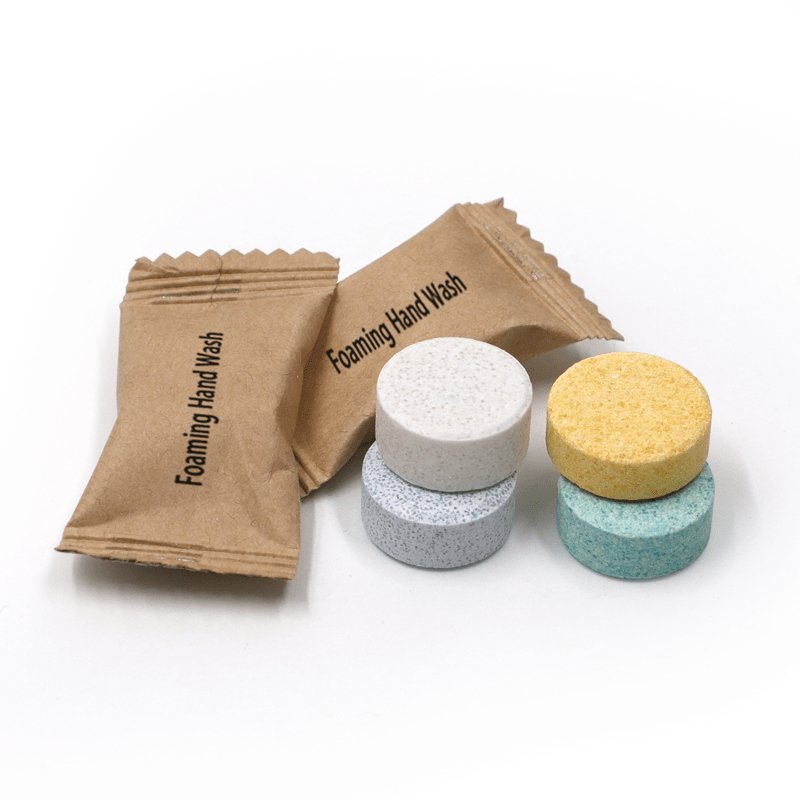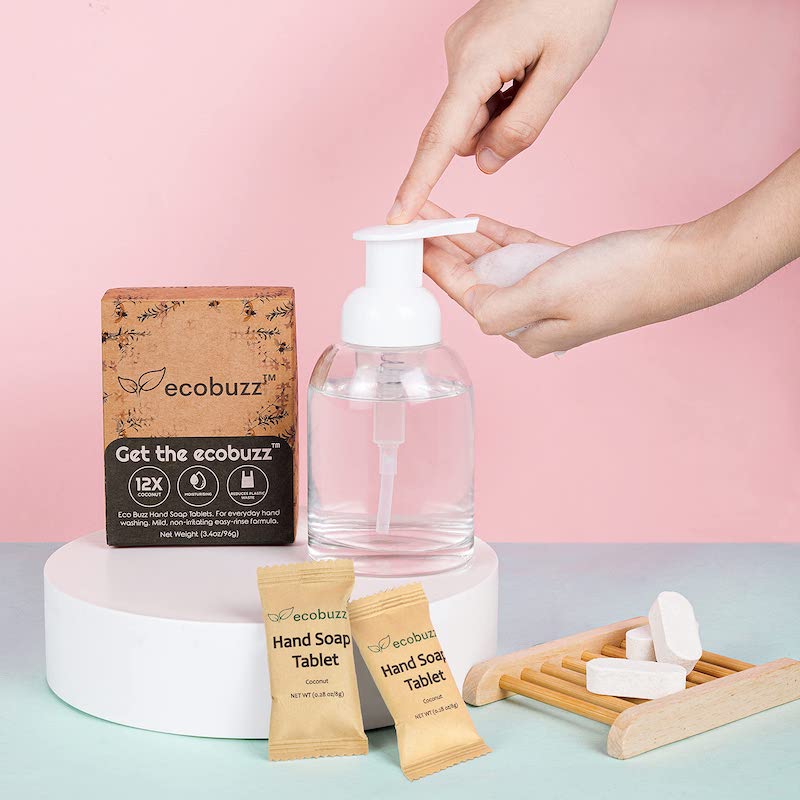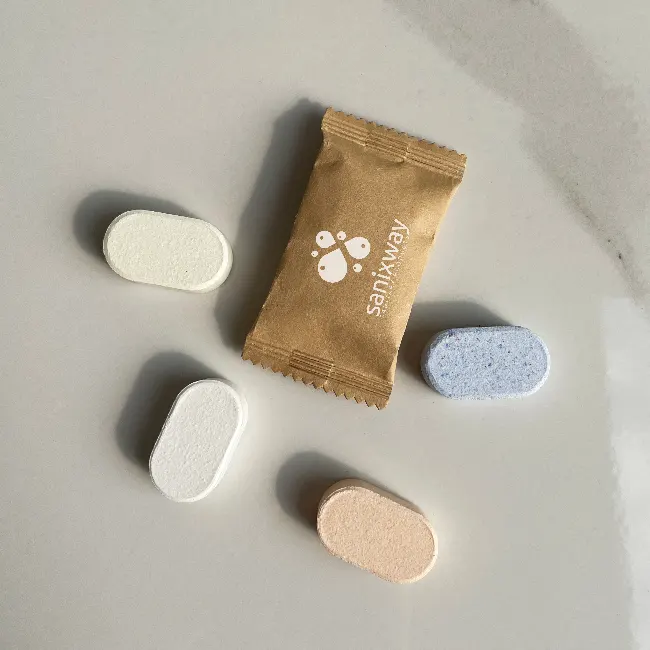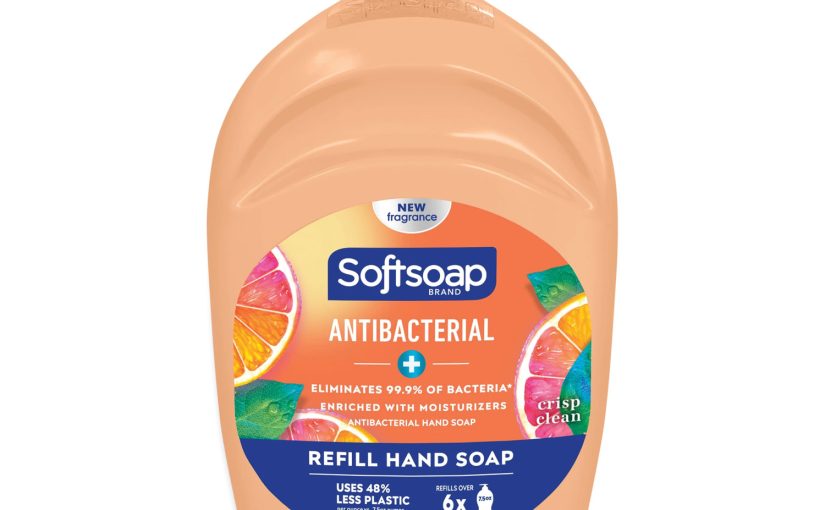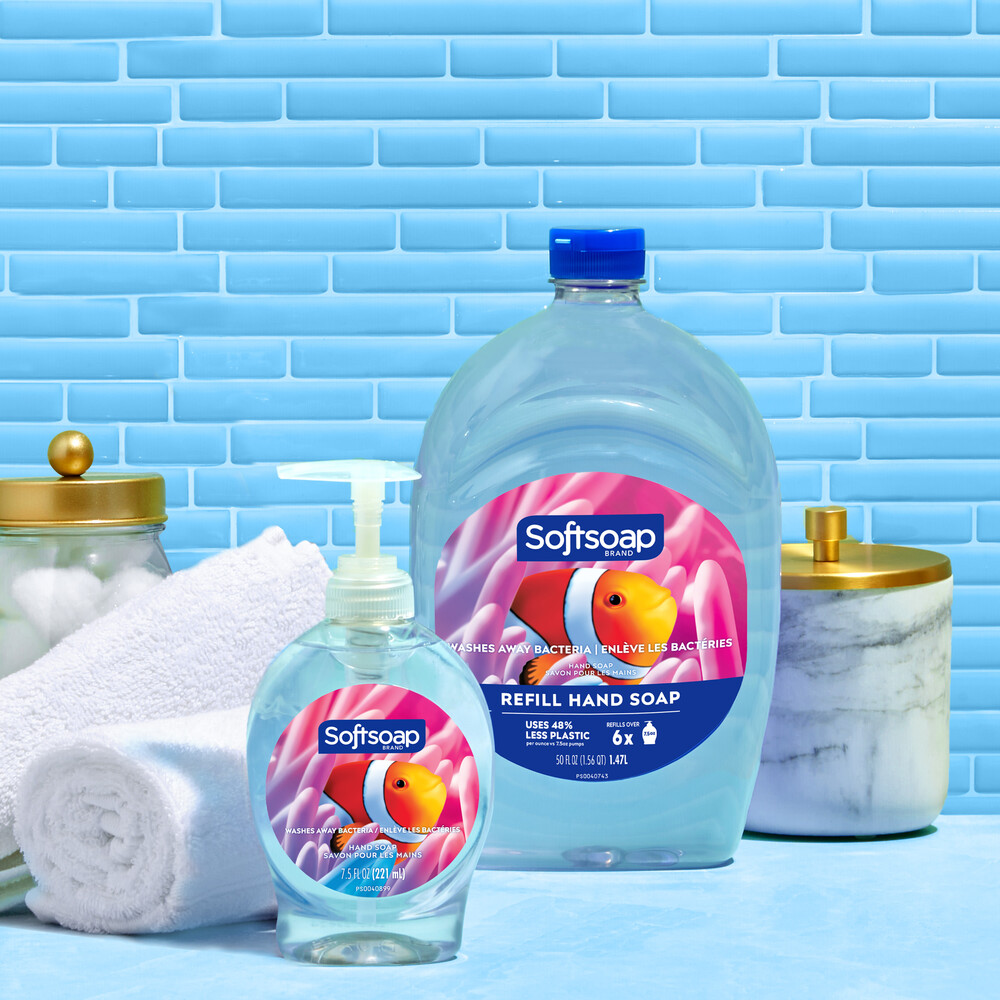What Are Hand Soap Tablets?
Hand soap tablets are a modern cleaning solution. They are solid, dry tablets. You dissolve them in water to create liquid soap. This innovative approach reduces the need for plastic bottles. It also lowers shipping weight and volume.
These tablets offer a more eco-friendly approach to hygiene. They come in various scents and formulas. Users can choose based on their skin type or personal preference.
Hand soap tablets are gaining popularity. They are sold by brands focusing on sustainability. More people are looking for ways to reduce their environmental impact. These tablets tackle that very issue.
They are easy to store and transport. This makes them ideal for travel or limited storage spaces. Hand soap tablets are a step toward a cleaner, less wasteful future.
Benefits of Using Hand Soap Tablets
Hand soap tablets bring several benefits to both consumers and the environment. Recognizing these advantages can help in making informed decisions about our daily hygiene practices.
Environmental Impact Reduction
Switching to hand soap tablets significantly cuts down on plastic waste. Traditional liquid soaps come in plastic bottles that often end up in landfills. The soap tablets, however, use minimal packaging, often made from biodegradable materials. This simple switch can lead to a substantial decrease in plastic pollution. Moreover, the reduced weight and volume from transporting these compact tablets mean lower carbon emissions during shipping.
Economic Advantages
Hand soap tablets can also be friendly to your wallet. Because they are lightweight and compact, they are cheaper to ship. Consumers are not paying for the water found in liquid soap, but just the active ingredients. Over time, the cost savings from not purchasing single-use plastic bottles add up, providing long-term economic benefits.
Convenience and Portability
The small size of soap tablets makes them ultra-convenient. They take up less space, making them perfect for smaller homes, offices, or even gyms. For those who travel, these tablets are a game-changer – no more worrying about liquid restrictions or spills in your luggage. They’re easy to carry and use, simplifying the way we maintain cleanliness wherever we go.
How Hand Soap Tablets Contribute to Sustainability
Hand soap tablets champion sustainability in several impactful ways. They employ smart design and eco-conscious practices to benefit our planet.
Zero-Waste Packaging
The packaging of soap tablets is a significant factor in their eco-friendliness. Many brands use zero-waste or minimal waste packaging options. These include compostable bags or recyclable paper materials. No plastic means nothing goes to landfills. With these tablets, every wash contributes to less waste and a cleaner environment.
Natural Ingredients and Formulations
Besides the packaging, the contents of hand soap tablets play a big part. Makers often use natural ingredients. These are safer for our water systems and skin. Simple, clean formulas without harsh chemicals mean less environmental damage. By choosing soap tablets, we support the use of renewable resources. We also avoid contributing to chemical runoff, preserving natural ecosystems.
The Making of Hand Soap Tablets
Creating hand soap tablets involves careful selection of ingredients and a precise manufacturing process. This ensures the end product is both effective and eco-friendly.
Ingredients Typically Used in Hand Soap Tablets
Hand soap tablets consist of concentrated ingredients that cleanse and nourish the skin. Common ingredients include:
- Sodium bicarbonate: It cleanses and deodorizes.
- Citric acid: It helps in tablet dissolution and stabilizes the pH.
- Sodium lauryl sulfoacetate: Derived from coconut, it acts as a gentle surfactant.
- Essential oils: These provide natural fragrances and have antimicrobial properties.
- Plant-based binders: These help in forming the tablet shape.
These components are chosen for their low environmental impact and skin-friendliness.
The Manufacturing Process
The process to make hand soap tablets is as follows:
- Mix dry ingredients: Powders and binders are blended uniformly.
- Add essential oils: For scent and added cleaning properties.
- Press tablets: The mixture is compressed into tablet form.
- Quality check: Tablets are examined for consistency and quality.
- Package: Tablets are packed in eco-friendly materials.
This method uses less water and energy compared to liquid soap production. It also ensures tablets remain potent and ready to use.
Comparing Hand Soap Tablets to Traditional Liquid Soaps
When we weigh the soap tablets against traditional liquid soaps, the differences can be quite stark.
Environmental Considerations
Hand soap tablets trump traditional liquid soaps in environmental stewardship. These tablets minimize plastic bottle use, helping to cut back on landfill waste. In contrast, liquid soaps often come in single-use plastic containers. Moreover, soap tablets reduce carbon emissions during shipping due to their lighter weight and smaller size. Liquid soap’s bulkiness results in heavier transportation and higher fuel consumption. For the eco-conscious consumer, the soap tablets offer a clear advantage in preserving our planet’s health.
Long-Term Cost Efficiency
Economically, hand soap tablets are a wise choice over time. By eliminating the water component, these tablets allow consumers to pay only for essential cleansing agents. Traditional liquid soaps include water, a readily available resource at home, which needlessly inflates costs. Furthermore, the longevity of a single tablet tends to surpass that of liquid soaps, compounding savings. This long-term cost efficiency is a smart financial move for households and businesses alike. Switching to hand soap tablets can result in noticeable savings while fostering a sustainable lifestyle.
Leading Brands of Hand Soap Tablets
As the demand for eco-friendly products rises, several brands stand out in the market of soap tablets.
Product Offerings and Company Ethos
These brands offer a variety of options to cater to different preferences. They aim to balance quality with sustainability. Their tablets often feature natural scents and effective cleansing properties. Packaging is usually biodegradable or recyclable, further reducing environmental impact. Top brands heavily invest in research and development. They seek to innovate and improve both product and practice. Their ethos revolves around environmental responsibility and customer well-being. By choosing these brands, consumers support sustainable business models. They also encourage industry-wide shifts toward eco-consciousness. In sum, these leading brands help make sustainable living accessible and appealing.
How to Use Hand Soap Tablets
Using hand soap tablets is straightforward and convenient. Here’s a simple step-by-step guide to help you get started:
Step-by-Step Guide for Consumers
- Fill a Bottle with Water: Start by finding a reusable soap dispenser. Fill it with warm water, leaving a bit of space at the top.
- Drop the Tablet In: Take a single hand soap tablet and drop it into the water. Ensure your hands are dry to avoid dissolving it prematurely.
- Let It Dissolve: Allow the tablet to fully dissolve in the water. This usually takes a few minutes.
- Shake Gently: Once the tablet has dissolved, secure the dispenser’s lid and shake it gently. This helps mix the soap evenly.
- Ready to Use: Your hand soap is now ready to use. Pump a small amount onto your hands, lather with water, and rinse.
These simple steps show how using soap tablets not only helps the environment but also adds convenience to daily routines. Each tablet provides an effective clean while reducing waste and saving space.
Final Thoughts on the Transition to Hand Soap Tablets
The shift to soap tablets is not just a trend. It represents a conscious choice for a greener lifestyle. As we’ve discussed, these products offer tangible benefits for the environment and our personal finances. They also bring the ease of use and portability into our daily lives.
Adopting soap tablets means reducing plastic waste markedly. It involves backing brands that are committed to sustainable practices. These efforts collectively contribute to combating plastic pollution.
Economically, these tablets are a smart choice. They let consumers save on the extra costs associated with liquid soaps. And, they are more aligned with an eco-conscious consumerism mindset.
For those considering this switch, the choice is simple but impactful. It’s a step towards responsible consumption and supports a circular economy. Hand soap tablets are a beacon in the move towards sustainability. They hold great promise for the future.
With each tablet we dissolve, we’re taking a small but significant action. We are preserving our planet’s resources. We’re supporting a market that values our health and the environment equally. The growth in popularity of soap tablets is a hopeful sign. It shows more people are willing to embrace eco-friendly alternatives in their daily routines.
In summary, soap tablets are not just cleaning agents. They are a symbol of our ability to innovate and care for our world. By embracing them, we are not just washing our hands. We are taking part in a larger movement towards a more sustainable future. It is a small shift in habit with a big environmental payoff.

